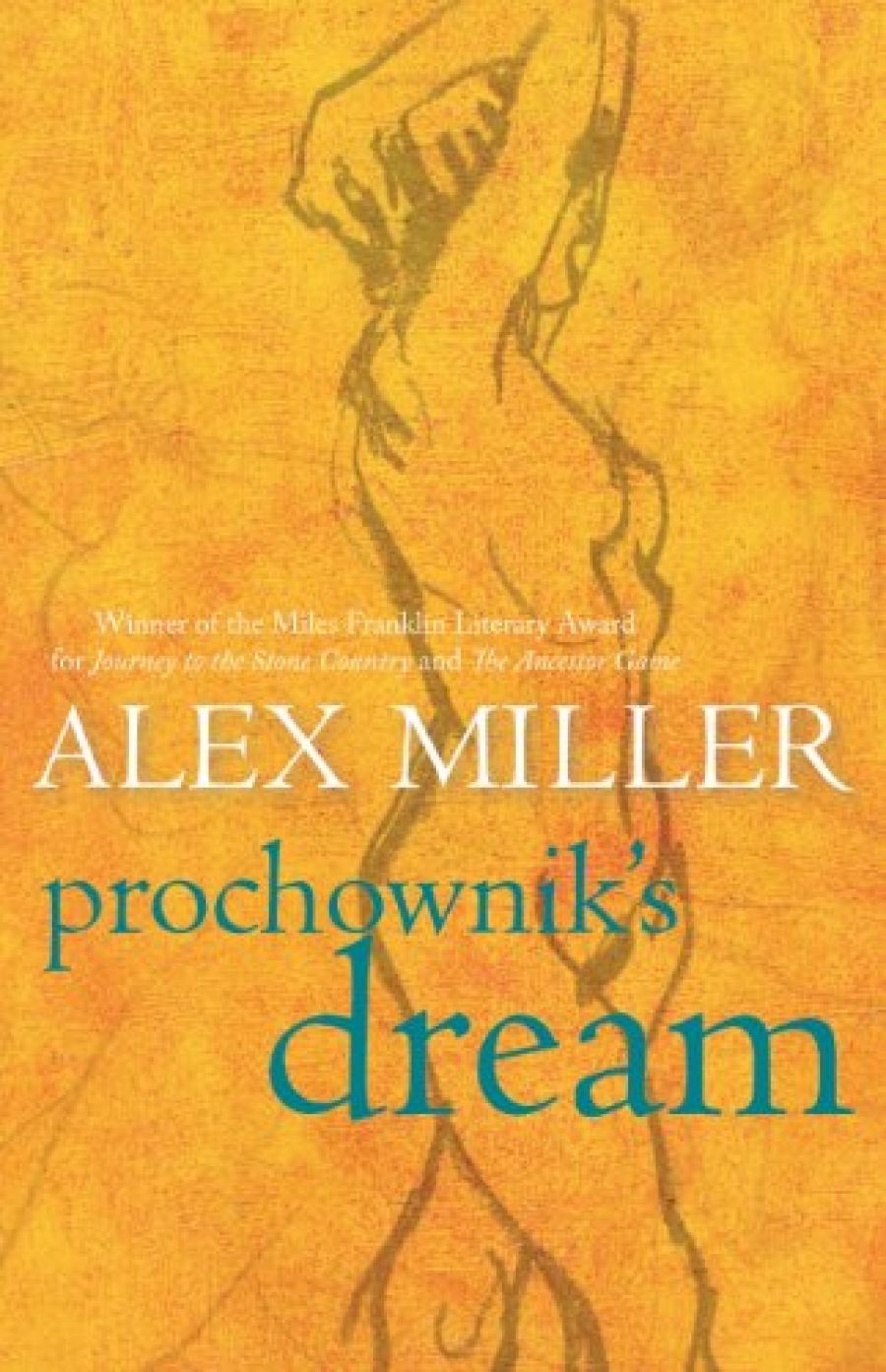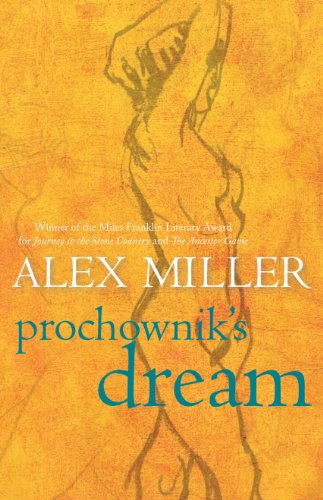
- Free Article: No
- Contents Category: Fiction
- Review Article: Yes
- Article Title: The bearable past
- Online Only: No
- Custom Highlight Text:
Two-thirds of the way through Alex Miller’s Journey to the Stone Country (2002), its characters come across a house standing in a valley high in the Queensland ranges. The house is empty, abandoned like some landlocked Marie Celeste, but in one room a library remains. Standing before the shelves, one of the characters removes a volume, only to find the pages eaten away to dust, the book, like the house, an empty shell. It is a scene of extraordinary power and implication, resonant with the peculiar energy that builds when meaning coalesces, however briefly, and we feel ourselves in the presence of something that runs deeper than words.
- Book 1 Title: Prochownik's Dream
- Book 1 Biblio: Allen & Unwin, $29.95 pb, 320 pp, 1741142490
- Book 1 Cover Small (400 x 600):

- Book 1 Cover (800 x 1200):

This is territory that Miller has explored before, albeit in somewhat different terms, in The Sitters (1995), but Prochownik is conceived on an altogether grander scale. Painter Toni Powlett is blocked, and has been since the death of his father four years earlier. His father, a Polish immigrant, was also an artist, though, unlike Toni, he never exhibited, instead spending most of his adult life on a factory assembly line. Exactly why Toni is blocked is not clear, and while the years since his father’s death have not been artistically rewarding, he continues to enjoy the support of his wife, Teresa, and the love of his young daughter.
When Marina Golding and Robert Schwarz, friends and mentors from Toni’s student days, return to Melbourne from Sydney, Toni finds himself drawn to Marina. At first, the attraction is not sexual, but something in it unsettles Teresa. Already under pressure earning money to support Toni and his non-existent painting, her previous dislike of Robert and Marina hardens into something more profound, the knowledge that Toni has begun painting again, and better than he ever did before, only serving to make things worse.
Prochownik is – perhaps unsurprisingly for a book about creativity – shadowed by mortality. The most obvious absence is that of Toni’s father, but closer to the foreground there is also the figure of Robert’s dying father, an illustrator who has lived most of his life in Paris with his second wife. Elsewhere, there are further reminders: another painter, diagnosed with pancreatic cancer, encountered by Marina in a bank; a man killed by Toni’s brother; Marina’s ageing body; even Toni’s paintings themselves, with their weird, otherworldly light and intimations of death.
In some ways, Prochownik is a strangely old-fashioned book, not just in its construction and surface textures but in its evocation of the inner life of the artist and of the pressures that life creates, both internal and external. The world it depicts seems closer to Heide, in purpose and tone, than to today’s art world. Even the installations Toni has been making in lieu of painting since his father’s death – the serried ranks of empty suits and dresses – seem curiously out of time. In places, this creates a certain unease, not least in Miller’s descriptions of the unravelling of Toni and Teresa’s relationship. Teresa is at once too giving and too vengeful, her transition from willing helpmeet to harridan curiously undermotivated. This unease is only made the more unsettling by the way it is placed against the spiritual journey that Toni undertakes, and Miller’s seeming unwillingness to interrogate him or his motives.
Of course, reading Prochownik, or indeed any of Miller’s novels, in such a manner is to mistake them in a fundamental way. Despite their outwardly naturalistic appearances, these novels are only superficially concerned with the characters and social worlds they depict. Rather, they are concerned with what lies beneath, with the exploration of the symbolic and the archetypal landscapes they create.
At one level, this has always been clear: a line of descent can be traced from the explicitly Jungian The Tivington Nott (1989) to Journey to the Stone Country, but with Prochownik it is both more and less apparent than normal. A surprising amount of the novel is given over to the social context of the characters’ lives. But simultaneously, the novel’s other life gathers fragments and motifs rich in possibility. These pieces – Theo’s woodcuts, with their images of satyrs and devils, bondage and transformation, the empty suit that once belonged to his father that Toni keeps in his studio, even the echoes of alchemical oppositions in the arrangement of the relationships that drive the novel – pull against each other with the curious dreamlike logic of a Magritte or a de Chirico.
Throughout, something of the transgressive nature of art and, more pressingly, the creative process is made clear. Art is not something we control but something that controls us, Miller seems to be saying. But laid alongside this is another argument about the complex ways the past speaks through us, and the capacity of art – and love – to make that past bearable.
Yet it would do violence to the many meanings layered throughout Prochownik’s Dream to suggest a simple opposition or argument could be distilled from the interaction of these elements. As always, Miller is alive to the resistance of the symbolic to explication, and to the inadequacies of language as a tool for understanding the inner meanings of the unconscious. But, like the complex, layered meanings of Toni’s paintings, it offers something more easily apprehended than explained, a glimpse of another, deeper world, something closer to dream than memory, its whole far greater than the sum of its parts.


Comments powered by CComment